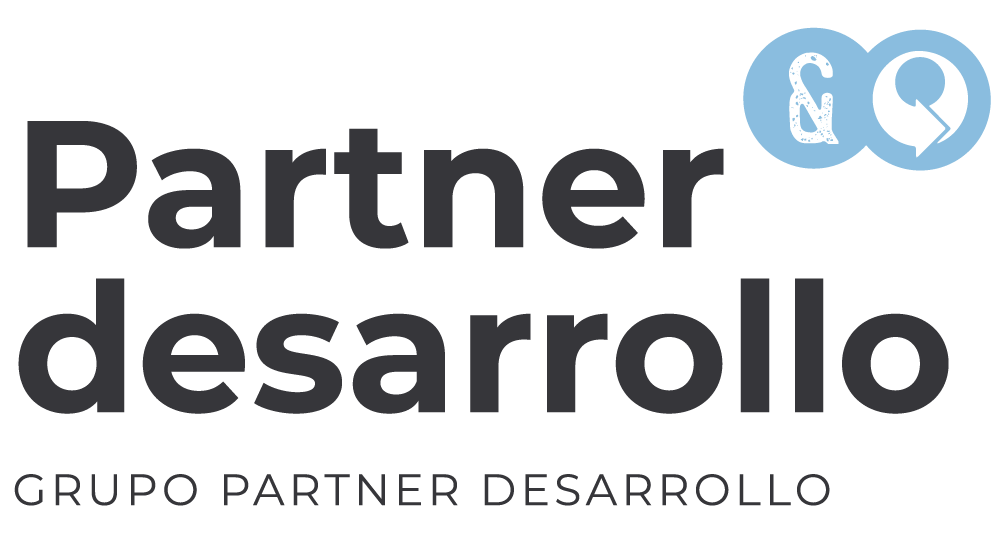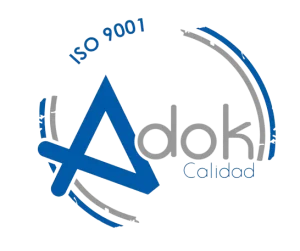Description
Topic 1: People Management
Staff management in restoration I: planning
- Staff Planning
- organization and organization chart
- Obligations and labor rights
- Professional categories and groups in hospitality
- The employment contract
- The training and recruitment process
- The formation
Staff management in restoration II: management
- Job description: the Job Description
- Recruitment and selection of personnel
- The job interview and selection
- Incorporation into the workplace: the adaptation process
- Staff evaluation
- Management by objectives: the DPO
Topic 2: Purchasing Management
Purchasing management in the restaurant I
- The purchasing department and its objectives
- Selection of suppliers and supply channels
- interdepartmental integration
Purchasing management in the restaurant II
- Valuation of inventories: FIFO, LIFO, HIFO, standard cost and average cost
- economic management
- consumption
- discounts and rappels
- The stock and the rotation of merchandise
- “In house” products vs “convenience food”: I, II, III, IV and V food range
- Just-in-time products
- The purchasing manager, his responsibility and his functions
The product and food, the kitchen, and its different preparations
- The 5 large groups into which food is divided
- Fish and its preparations: white, blue, river fish, shellfish, crustaceans, molluscs and caviar
- Poultry and game and their preparations
- The beef
- Lamb and pork meat
- The egg
- Milk, cream and butter
- The bread and cereals
- salt and sugar
- Condiments, flavourings, fats and oils
- vegetables and tubers
- Potatoes, legumes, mushrooms and salads
- Fruit
- the cheeses
The gluten-free kitchen
- Gluten-free cooking I
- Gluten-free cooking II
- Gluten-free cooking III
- gluten free recipes
Types of cuisine and their elaborations
- Ethnic cuisine: Thai and Indian cuisine
- The pintxos
- Vegetarian cooking recipes
The vacuum kitchen
- History and introduction of vacuum cooking
- What is vacuum cooking?
- Necessities and material to work the vacuum kitchen
- Decalogue and factors that influence the quality of the vacuum
- Previous preparations and cooking temperatures
- Exceptions and regeneration
Topic 3: The kitchen and its operations
The product and food, the kitchen, and its different preparations
- The 5 large groups into which food is divided
- Fish and its preparations: white, blue, river fish, shellfish, crustaceans, molluscs and caviar
- Poultry and game and their preparations
- The beef
- Lamb and pork meat
- The egg
- Milk, cream and butter
- The bread and cereals
- salt and sugar
- Condiments, flavourings, fats and oils
- vegetables and tubers
- Potatoes, legumes, mushrooms and salads
- Fruit
- the cheeses
The cook and the kitchen
- The cook and the kitchen
- kitchen elements
- Preparations in the kitchen
- Kitchen preparation processes
- kitchen performance
Cooking methods and sauces
- Cooking methods and techniques
- preparation of sauces
Topic 4: Kitchen Management
Kitchen management I: organization in the kitchen
- Kitchen areas and structural requirements
- Cookware
- Cooking techniques and preparations: mise en place, cooking points, stocks and sauces
- allergens
- Cooking techniques: vacuum cooking and vegetarian cooking
- Conservation methods in the kitchen
Kitchen Management II
- Main materials used in kitchen
- Elements, machinery and kitchen equipment
- Culinary treatments and types of cooking
- Composition of the different foods
- Main functions of nutrients
- Indications for the preparation of menus in diet therapy
Management of the kitchen and its items
- Organization of the kitchen and its work areas
- Time management and operations
- Cold room, hot room, showcooking and pastry
Food weights and portions
A chef at home: videos of various classic recipes
Kitchen control sheets
- Kitchen opening checklist
- Kitchen closing checklist
- Warehouse and inventory control
- List of allergens in letters
Plating and presentation of dishes
- Plating and presentation
- Colors
- work with consistency
- Elaboration of shapes and arrangements
Kitchen Equipment Management
- What is a leader
- How to build trust
- be an example case
- Give tools: communication
- Build from the positive: problem solving
Neuromarketing and dopamine in the kitchen
- Definition of neuromarketing
- auditory marketing
- Kinesthetic Marketing
- visual marketing
Topic 5: Image and strategy in buffets
The buffet in hotels
- Types of pensions and schemes
- Breakfast and its presentation
- themed buffets
- The different sections in the buffets
- Elements and machinery of the buffets
- Practical tips to improve the image of buffets
Strategy and Marketing in buffets
- Visual merchandising and window dressing
- The sales strategy in buffets
- Neuromarketing and buffets 2.0
- Composition of the different foods
- Image and presentation of the buffets
Cuts in fruits and vegetables
How to direct the client in the hotel buffet
Strategies in current buffets
- Presentation of each day
- The importance in design and impressions
- Showcooking as a great ally
- How to achieve connection with the client to improve their satisfaction
- The importance of teamwork
showcooking
- Showcooking at buffets
- The client in the showcooking
Other important elements for the image of buffets
- The exhibition and the household
- Desserts at buffets
- The declarations
- allergens
- gluten free products
Training and hygiene of restaurant staff
- Cleaning and disinfection
- conflict points
- Equipment maintenance and repairs
- body hygiene
- Staff training
- The lesions
Processes for restaurant staff
- Points to consider in stocking
- Handling and use of the egg
- The use of oil for frying and the different smoke points
- Cleaning, disinfection, order and waste
- Separate raw and cooked foods
- safety temperatures
HACCP system
- The hazard analysis
- The identification of critical control points (CCP)
- Set critical limits
- surveillance system
- Corrective actions for PPCs
- verification system
- Creation of the documentation system
Main dangers and diseases for the organism
- List of hazards and food-borne diseases
- food contamination
- Factors contributing to the occurrence of foodborne illnesses
- germs
- Main diseases, bacteria and toxic substances
- pest control
Main points to control in terms of food safety and hygiene in restaurants
- Conservation control tables and temperatures
- Goods acceptance process
- waste disposal process
- Disease prevention process
- Provisions in case of health emergency
- Control points or premises
labeling in food
- the labeling
- How to read the label
- Packaged, confectioned or loose foods
- The metrological symbol
- Barcode and QR
digitization
- Changes in demand: the POS software
- Sales management through digitization, product management and hardware elements of the POS
The digitization plan
- Preparation of the digitization plan
- Data storage and hosting
- Cloud technology, digitization process management and people
The digitalization strategy
- The digitization strategy in restaurants
- Reasons to implement a digital strategy in a restaurant
- Strategy and success in digital transformation
- Points to consider in technological improvement
Digitization in the industry food & Beverage
- POS terminals, PDAs, totems, touch screen tables, management software
- Digitization in purchases and in the commissary
- Elements that influence the choice of a digital services partner and advantages of digitizing in restoration
Topic 6: Finance and control in restoration
Budget
- Cost, expense and consumption
- The production, the margin and the result
- Investment and result: ROE and ROI, EBIT and EBITDA
- Budgeting
- amortization
profitability
- The profitability threshold, the break even point
- Analysis of rentability
- The 4 basic rules for calculating performance in a restaurant
- contribution margin
Analysis and control of staff spending
- Economic analysis FTE (Full Time Equivalent)
- Staff productivity analysis
Control of the product "food and beverages"
- The price tag and the technical sheet of the product
- Errors when preparing scandals
- The pricing menu
Sales analysis
- Average ticket analysis
- Customer spending frequency
- Analysis on product sales
- Positioning and communication
- SEO, branding and Corporate Identity
- The design of the website
- Measure the result of actions or promotions
the current client
- Millennials and Generation Z
- Current customer preferences
- Differentiation, innovation, fashion and trend
- The Dark Kitchens
- Steps to create an authentic gastronomic experience
Topic 7: Food safety and hygiene
self control
- Importance of maintaining hygiene in food preparation
- traceability
- Basic principles for manipulators
- self control
- The self control manual
- The organization chart of the restaurant for control purposes
- Pros and Cons of Good Food Hygiene Practices
Reception and handling of food
- Providers
- The acceptance of goods
- Proper storage and storage
- Maximum times for refrigeration and freezing
- freezing and thawing
- Common mistakes in kitchen design
- Facilities and equipment
- Food handling
- Treatment of raw animal products
- The use of waste
- The declarations
- allergens
- gluten free products
Training and hygiene of restaurant staff
- Cleaning and disinfection
- conflict points
- Equipment maintenance and repairs
- body hygiene
- Staff training
- The lesions
Processes for restaurant staff
- Points to consider in stocking
- Handling and use of the egg
- The use of oil for frying and the different smoke points
- Cleaning, disinfection, order and waste
- Separate raw and cooked foods
- safety temperatures
HACCP system
- The hazard analysis
- The identification of critical control points (CCP)
- Set critical limits
- surveillance system
- Corrective actions for PPCs
- verification system
- Creation of the documentation system
Main dangers and diseases for the organism
- List of hazards and food-borne diseases
- food contamination
- Factors contributing to the occurrence of foodborne illnesses
- germs
- Main diseases, bacteria and toxic substances
- pest control
Main points to control in terms of food safety and hygiene in restaurants
- Conservation control tables and temperatures
- Goods acceptance process
- waste disposal process
- Disease prevention process
- Provisions in case of health emergency
- Control points or premises
labeling in food
- the labeling
- How to read the label
- Packaged, confectioned or loose foods
- The metrological symbol
- Barcode and QR
Topic 8: Types of events
Characteristics and types of events
- Company events, conferences, presentations, coffee breaks, standing dinner, weddings, incentives, workshops
- Classification of events
The MICE
- Characteristics of MICE
- Incentive and congresses
- Elements of the Marketing Plan for the MICE sector
- Public or semi-public entities available
- Convention Bureaux
- Tourism entities and DMCs
Success events and restoration
- Characteristics of successful events
- Create the line of communication
- The "fil rouge"
- Types of events in the restoration
- Administrative management of events
Topic 9: The client in the hospitality industry
Introduction to Marketing in the restoration
- Introduction to Marketing in the restoration
- Leader
- Market study
- Strategies when designing your menu
- Define the target or ideal client
- Positioning and communication
- SEO, branding and Corporate Identity
- The design of the website
- Measure the result of actions or promotions
the current client
- Millennials and Generation Z
- Current customer preferences
- Differentiation, innovation, fashion and trend
- The Dark Kitchens
- Steps to create an authentic gastronomic experience


Reviews
There are no reviews yet.